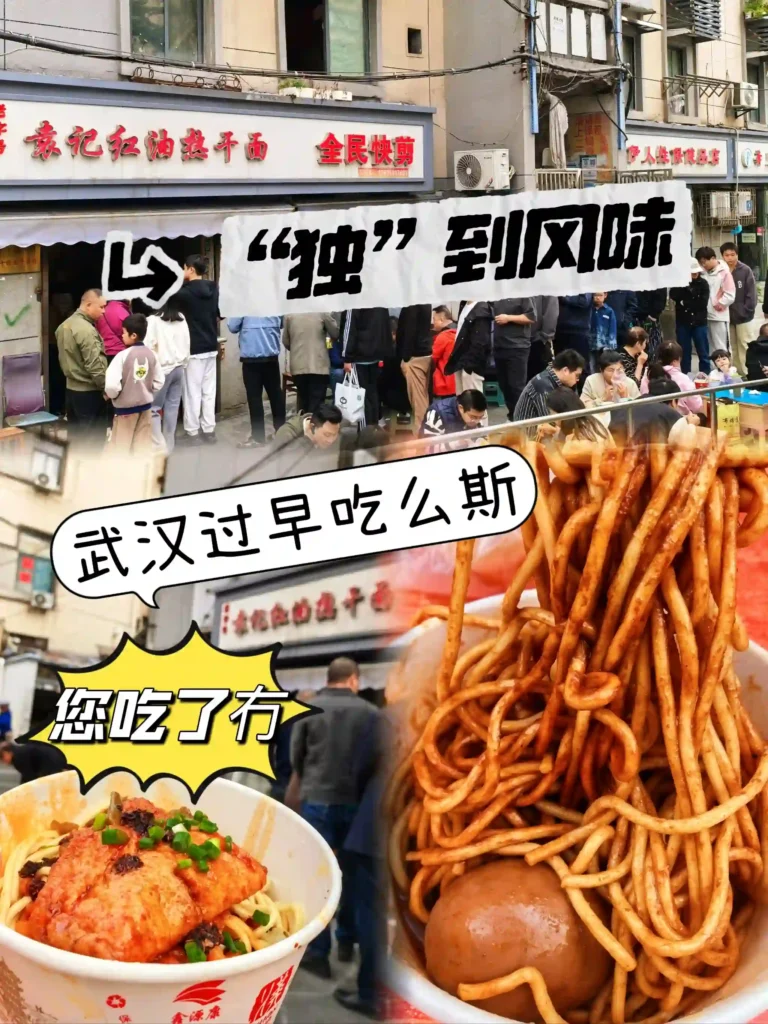🎧 Listen to text audio:

(假期,苏苏 和 玛丽 来 到 武汉。)
English
During the holiday, Susu and Mary come to Wuhan。
苏苏:玛丽,你 知道 在 武汉,吃 早餐 叫 什么 吗?
English
Susu: Mary, do you know what breakfast is called in Wuhan?
玛丽: 不 知道 呢。
English
Mary: I don’t know.

苏苏: 叫 “过 早”。在 这里,人们 最 喜欢 的 过早 食物 是 热干面。
English
Susu: It’s called “guòzǎo.” Here, people’s favourite breakfast food is hot dry noodles.
玛丽: 热干面 是 什么?又 热 又 干 的 面 吗?
English
Mary: What are hot dry noodles? Noodles that are hot and dry?
苏苏: 没错!热干面 跟 普通 的 汤 面 不 一样,是 干 拌 面。
English
Susu: That’s right! Hot dry noodles are different from regular noodle soup. They are dry-mixed noodles.
玛丽: 好 有意思,我 想 尝尝!
English
Mary: That sounds interesting! I want to try!
苏苏: 走 吧,在 武汉 到处 都 有 卖 热干面 的 店。
English
Susu: Let’s go! There are hot dry noodle shops everywhere in Wuhan.
玛丽: 这 家 店 怎么样?
English
Mary: How about this shop?
苏苏: 看上去 不错,我们 进去 尝尝 吧!
English
Susu: Looks good! Let’s go in and try!
(在面馆)
English
(At the noodle shop)
玛丽: 哇,热 热的 面条 拌 上 芝麻 酱、葱花 和 辣 萝卜,真 好吃!
English
Mary: Wow! The hot noodles mixed with sesame paste, green onions, and spicy radish are so delicious!
苏苏: 是 啊!热干面 很 香,也 很 有 嚼劲。
English
Susu: Yes! Hot dry noodles are fragrant and chewy.
语法点 (Grammar Points)
1. 有…还有… – There is… and also…
This structure is used to list different things.
文中 (In text):
– 这是烤串,有羊肉、鸡肉,还有蔬菜。
– These are skewers. There is lamb, chicken, and also vegetables.
例 (Example):
– 我的书包里有书,还有一个苹果。
– There are books in my bag, and also an apple.


